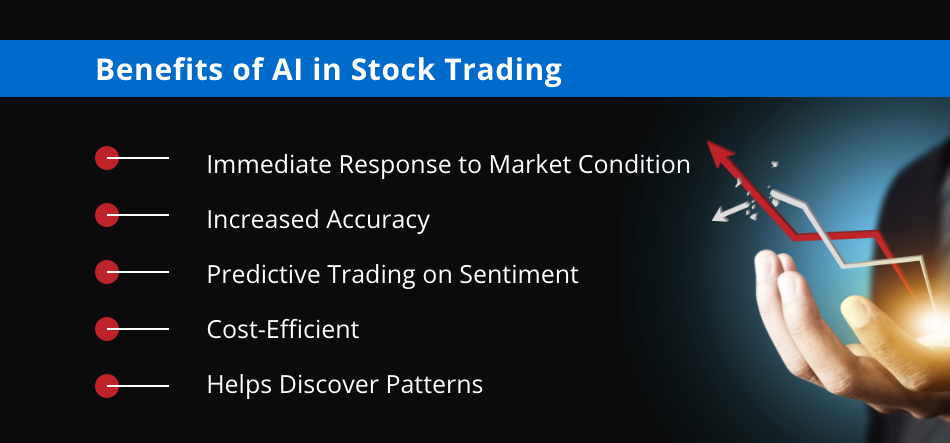20 Pro Advice On Deciding On AI Stock Predictions Analysis Websites
20 Pro Advice On Deciding On AI Stock Predictions Analysis Websites
Blog Article
Tips To Help Assess The Costs And Pricing Of Ai Trading Platforms That Forecast Or Analyze Price Of Stocks.
Examining the price and cost of AI analysis and stock prediction platforms is vital to ensure you get value for your money and avoid hidden charges or unexpected costs. Pricing structures vary greatly, and knowing what you're paying for is essential to make an informed choice. Here are ten top strategies to help you assess the price and value of these platforms.
1. Learn Pricing Model
Subscription-based : Determine whether there's a monthly fee or an annual fee, and which features are included in each level.
Pay-per - use: Verify the platform's charges are based on usage such as number of trades (or data requests) or predictions.
Freemium model: Assess if the platform offers an unpaid tier that has limited features and charges for premium features.
2. Compare Pricing Tiers
Compare features at each price level (e.g. professional, basic).
Scalability: Make sure the price tiers are aligned to your needs.
Upgrade flexibility: See whether your plan is easily upgraded or decreased as your needs change.
3. Evaluate Hidden Costs
Data fees: Find out if have to pay extra to access premium data.
Brokerage charges Check to see whether the platform is charged additional charges to conduct trades or connect with brokers.
API usage - Assess whether there are additional costs associated with API access and/or high-frequency use.
4. Review Free Trials and Demos
Trial period - Look for websites that offer the option of a trial or demo so you can try out the features before you commit.
The trial's limitations: Make sure that it is inclusive of all features, or if there are limitations in terms of the functionality.
If you feel that the platform isn't right for you, make sure that you can remove the trial.
5. Look for discounts and promotions.
Discounts for annual subscriptions: Find out whether your platform offers discounts on subscriptions paid annually compared with plans paid monthly.
Referral Programs Find out if your platform offers discounts or credits for users who refer others to it.
Ask about bulk or institutional prices if your business is a large one.
6. Assess Return on the investment
Cost is not the same as. value: Determine if the capabilities and features of the platform justifies the cost. Do you save time or make better decisions in trading?
Performance track record: Research the platform's performance rate or user reviews to assess the potential return on investment.
Costs of alternative: Compare the platform's cost with the cost of not using the platform (e.g. missed opportunities, time spent manual analysis).
7. Review, Cancellation, and Refund Policies
You should be able to end your subscription at any point without being charged any penalties or fees.
Refund policy Find out what the policy is for refunds. you for unused portions.
Auto-renewal. Verify if the platform will automatically renew your subscription. If so then you'll have to figure out how to stop it.
8. Transparency in Pricing:
Clear pricing: Make sure that the pricing of the platform is clear and includes no hidden costs.
Customer support Contact customer support to provide clarification on any pricing issues or any additional charges.
Contract Terms: Read the contract terms to determine the existence of penalties or long-term obligations.
9. Compare with Competitors
Comparing features: Ensure that you're getting the most value and the best platform when comparing it against its competition.
User reviews: Check out user feedback on the platform and determine whether it's worth the money.
Examine the positioning on the market for the platform. Does it meet your needs?
10. Evaluate Long-Term Costs
Price increases Look through the platform's history to find out how often it has increased prices.
Additions to features: Check whether you have new features in your plan currently or need to be upgraded.
Scalability cost: The platform should be priced in a reasonable way when your trading activities or data requirements grow.
Bonus Tips
Free trials for multiple platforms are available for you to try and evaluate the benefits and performance of different platforms.
Negotiate the cost: If you are a frequent user or a part of a large institution You can inquire for discounts or special pricing.
Check out educational tools and resources. A lot of platforms offer free tools or educational materials, which can be great additions to the features they already have.
If you follow these guidelines You can easily evaluate the price and cost of AI platform for predicting and analyzing stocks and ensure you select one that is within your budget and delivers the features and performance you want. A platform that is priced well should strike a balance between affordability, functionality and performance in order to optimize your trading. Follow the top using ai to trade stocks blog for more info including best ai trading app, trading with ai, using ai to trade stocks, investment ai, ai trade, best ai stock, chart ai trading assistant, ai investing app, ai for investment, ai trading and more.
Top 10 Ways To Analyze The Maintenance And Updates Of Ai Stock Trading Platforms
Assessing the updates and maintenance of AI-driven platforms for trading and stock prediction is essential to ensure they are secure, efficient and in tune with the changing market conditions. Here are 10 suggestions on how you can evaluate their update and maintenance practices:
1. Updates are frequently made
Check the frequency of your platform's updates (e.g. weekly, monthly or quarterly).
Updates on a regular basis show active improvement of the product and the ability to adapt to market changes.
2. Transparency in Release notes
Read the release notes on your platform to determine what improvements and modifications were made.
Transparent release notes show the platform's dedication to continual improvements.
3. AI Model Retraining Schedule
Tips: Find out how often AI models are retrained by using fresh data.
What's the reason? As markets evolve, models need to adapt in order to stay accurate and relevant.
4. Correction of bugs and issues
Tip: Check the speed with which the platform resolves bugs and technical issues.
Why bugs are fixed promptly to make sure that the platform remains reliable and functional.
5. Security Updates
TIP: Make sure that the platform regularly updates its security protocols to safeguard the privacy of traders and data.
Why is it important? Cybersecurity is essential on financial platforms to protect against fraud.
6. Integration of New Features
Find out if any new features are being added (e.g. new databases or advanced analytics) Based on the feedback of users as well as market trends.
Why are feature updates important? They show creativity and responsiveness to the needs of users.
7. Backward compatibility
Tip: Check that updating does not cause any major disruption to existing functionality or require a significant change in configuration.
What is the reason? It is important to ensure smooth user interface transitions.
8. Communication between Maintenance and the User Personnel
TIP: Assess the way in which your platform announces scheduled maintenance or downtimes to users.
Why: Clear communication minimizes disruptions and builds confidence.
9. Performance Monitoring and Optimization
TIP: Ensure that the platform is constantly monitoring key performance indicators like latency or accuracy and optimizes their systems.
Why: Continuous optimization is necessary to ensure the platform's efficiency.
10. Compliance with Regulatory Changes
Find out if the platform's features and policies have been updated to comply with new financial regulations, or data privacy laws.
Reasons: Regulatory compliance is essential to avoid legal risks and maintain user trust.
Bonus Tip User Feedback Integration
Check if the platform actively integrates feedback from users into its updates and maintenance processes. This demonstrates a user centric approach and a commitment towards improvements.
When you look at all these aspects, it's possible to determine if you're sure the AI stock trading system you choose has been maintained properly. It should also be up-to-date and adaptable to changes in market dynamics. View the top stock trading ai examples for website info including ai stock price prediction, best ai penny stocks, free ai tool for stock market india, investing with ai, ai stock price prediction, ai investment tools, ai share trading, stock trading ai, ai trading tool, ai trading tool and more.